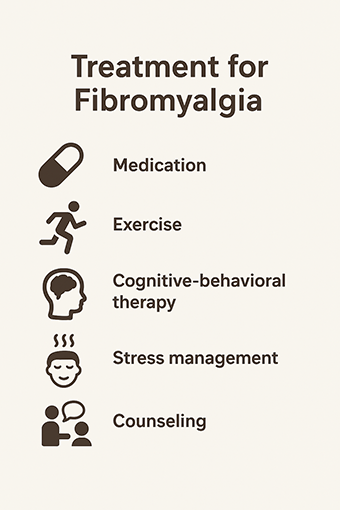Traditional Korean Medicine (Hanbang) Treatment for Fibromyalgia: Focusing on Ancient Texts and Empirical Prescriptions
1. Understanding Fibromyalgia in Traditional Korean Medicine

While fibromyalgia is recognized in modern medicine as a chronic pain disorder with an unclear cause, traditional Korean medicine (Hanbang) treats it under the categories of “Bi Syndrome (痺證),” “Muscle Bi (筋痺),” and “Wind-Dampness (風濕).”
According to the Huangdi Neijing (Yellow Emperor’s Inner Canon), pain is caused by the blockage of meridians by “Wind-Cold-Dampness邪 (風寒濕邪).” Specifically, it is linked to the theories of “The Liver Governs the Sinews (肝主筋)” and “The Spleen Governs the Muscles (脾主肌肉),” with key pathological mechanisms being Liver Qi Stagnation (肝氣鬱結), Spleen Qi Deficiency (脾氣虛弱), and Kidney Qi Deficiency (腎氣不足).
The Uijonggeumgam (Golden Mirror of Medicine) emphasizes that chronic pain is connected to blood circulation disorders (Blood Stasis, 瘀血), a concept described as “Chronic Bi Entering the Collaterals (久痺入絡).”
2. Treatment Approaches from Ancient Texts
Early-Stage Treatment (Wind-Cold-Dampness Syndrome)
- Gyejibujatang (桂枝附子湯) from Shanghanlun: Used for muscle pain caused by Cold-Dampness.
- Dokhwalsengtang (獨活寄生湯) from Donguibogam: Applied for pain and weakness in the lower back and limbs.
Chronic-Stage Treatment (Liver Stagnation, Spleen Deficiency, Blood Stasis)
- Soyosan (逍遙散) from Uihagipmun: Alleviates pain caused by stress and Liver Qi Stagnation.
- Jeoryeongtang (抵當湯) from Hyeoljeungnon: A treatment for activating blood circulation and resolving Blood Stasis (活血化瘀).
Strengthening Treatment (Kidney Qi Supplementation)
- Ugwieum (右歸飮) from Gyeongakjeonseo: Used for systemic weakness and pain due to Kidney Yang Deficiency (腎陽虛).
3. Empirical Prescriptions and Modern Hanbang Application
Pain Relief
- Cheonma (天麻), Baekjakyak (白芍藥): Relieve muscle spasms.
- Ganghwal (羌活), Dokhwal (獨活): Representative herbs for eliminating Wind-Dampness.
- Honghwa (紅花), Doin (桃仁): Treat Blood Stasis.
Constitutional Improvement
- Bojungikgitang (補中益氣湯): Improves fatigue caused by Spleen Qi Deficiency.
- Ondamtang (溫膽湯): Applied for accompanying sleep disorders.
External Treatments
- Acupuncture: Using acupoints such as GB34 (Yangneungcheon), LI4 (Hapgok), and SP6 (Sameumgyo).
- Cupping Therapy: A method for removing Blood Stasis.
4. Modern Research and Efficacy
- A 2019 study published in the Journal of the Korean Medicine Society reported a 40% reduction in pain scores for fibromyalgia patients through complex Hanbang treatment (acupuncture, herb-based injections, and herbal medicine).
- Experimental results suggest that the anti-inflammatory effects of certain herbal medicines (e.g., Hwanggeum (黃芩), Siho (柴胡)) contribute to regulating cytokine secretion.
5. Conclusion
Fibromyalgia is approached in traditional Korean medicine as “Root Deficiency and Branch Excess (本虛標實).” The core of the treatment is to eliminate the Wind-Cold-Dampness evil in the acute stage and to supplement the Liver Qi, Spleen Qi, and Kidney Qi in the chronic stage. A personalized treatment plan that combines ancient texts and modern empirical prescriptions is most effective, and it must be accompanied by stress management and sleep improvement.
References
- Huangdi Neijing (Yellow Emperor’s Inner Canon), Suwen Chapter
- Donguibogam (Principles and Practice of Eastern Medicine), Bi Syndrome Section
Journal of the Korean Medicine Society (2019), “Meta-analysis of Hanbang Treatment for Fibromyalgia”